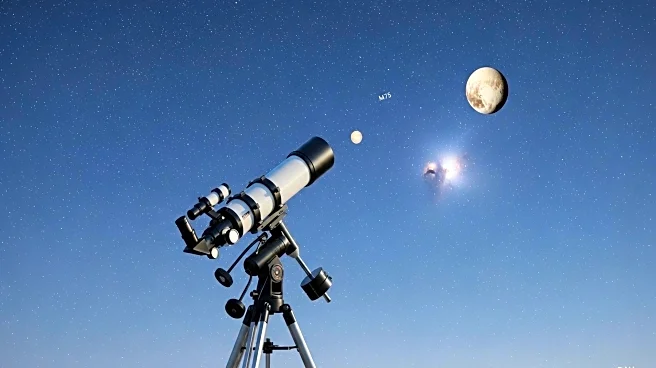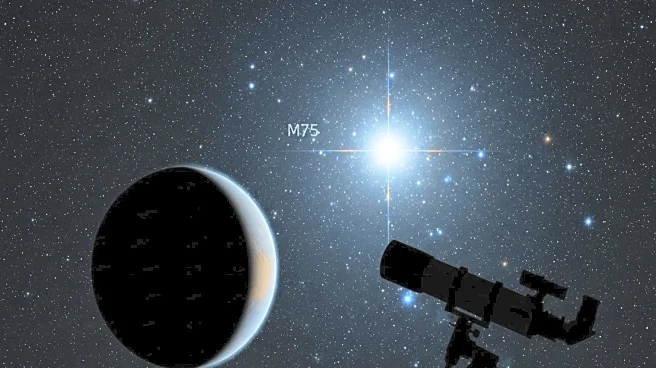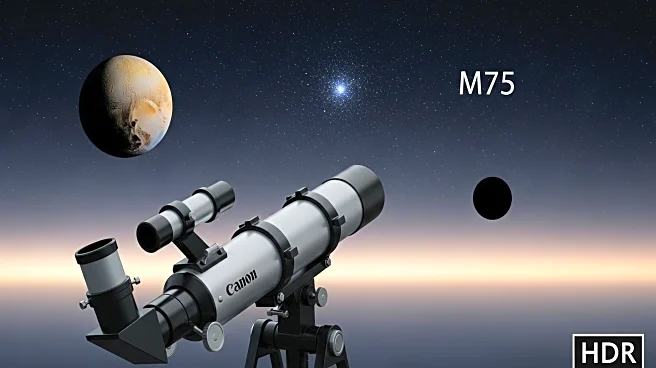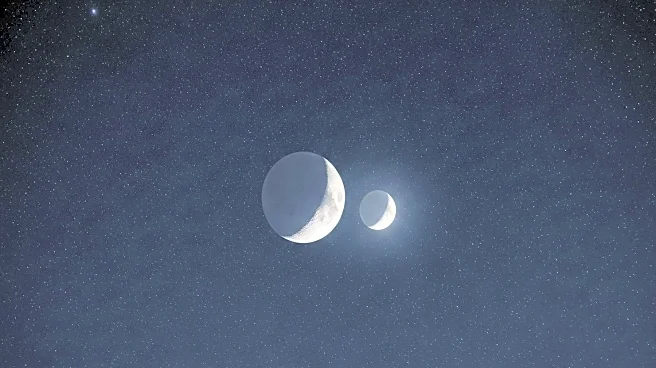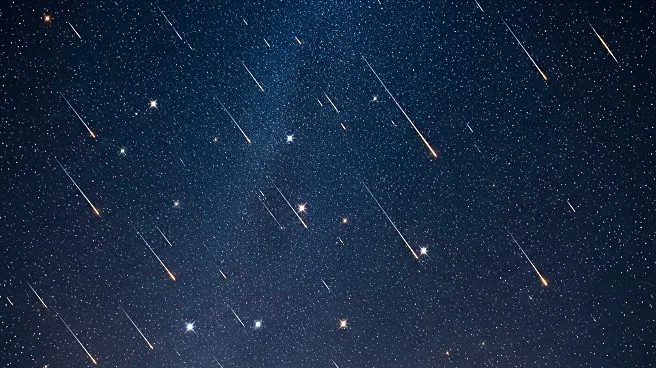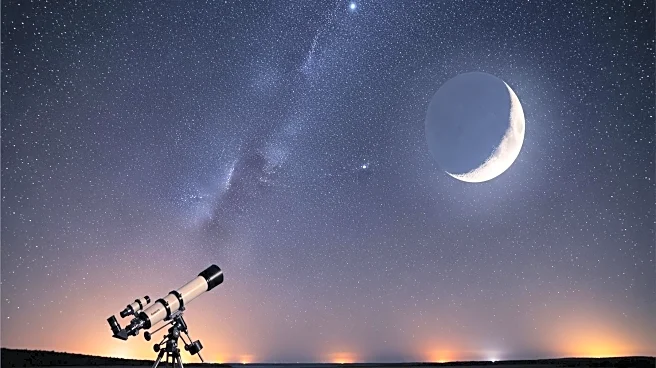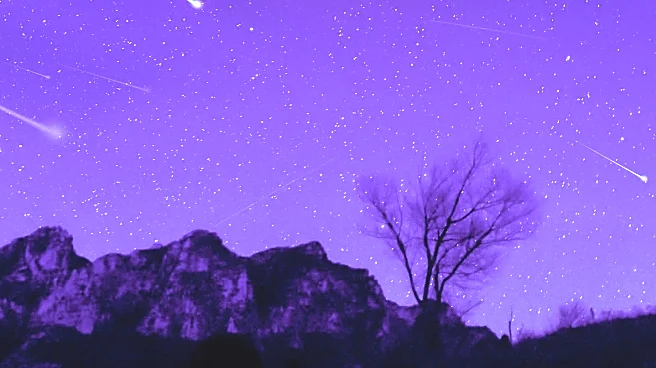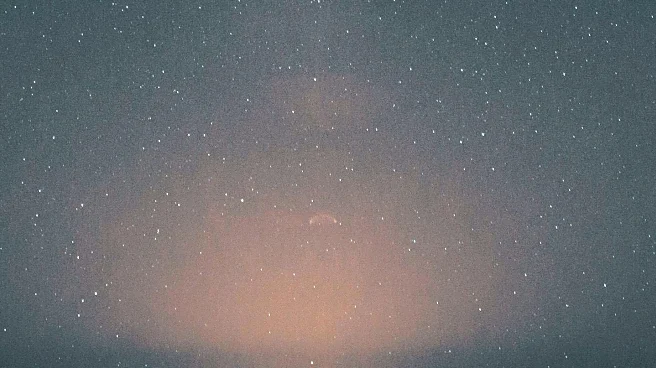What's Happening?
Astronomy enthusiasts are encouraged to observe the dwarf planet Pluto and the globular cluster M75 in the southern sky. On October 13, 2025, Pluto will be stationary in Capricornus, presenting a challenging target at magnitude 15.3, requiring large amateur telescopes for observation. Meanwhile, M75, located in Sagittarius, offers a more accessible viewing opportunity at magnitude 8.5. The Last Quarter Moon will rise alongside Jupiter around midnight, providing additional celestial sights, including Jupiter's Galilean moons visible through telescopic observation. Comet C/2025 A6 (Lemmon) is also noted for its visibility in the predawn sky, with its coma potentially displaying a green luminescence due to excited diatomic carbon.
Why It's Important?
This celestial event provides a unique opportunity for amateur astronomers to observe distant and faint objects in the night sky. The visibility of Pluto, despite its faint magnitude, challenges observers to utilize advanced equipment and techniques, fostering interest and skill development in astronomy. The presence of M75 and Comet Lemmon adds to the richness of the observational experience, encouraging engagement with deep-sky wonders. Such events can inspire educational activities and community gatherings centered around astronomy, promoting scientific curiosity and appreciation for the universe.
What's Next?
Observers are advised to prepare for optimal viewing conditions by utilizing go-to telescopes and seeking dark observing sites. As Comet Lemmon approaches its closest point to Earth on October 21, its brightness is expected to peak, offering a prime opportunity for observation. Astronomy enthusiasts may continue to track the comet's path and explore additional celestial events through resources like Astronomy Magazine's Sky This Week column. The ongoing visibility of Jupiter and its moons provides further opportunities for telescopic exploration and study.
Beyond the Headlines
The observation of distant celestial bodies like Pluto and M75 highlights the advancements in amateur astronomy equipment and techniques. The ability to capture faint objects underscores the progress in optical technology and the growing accessibility of astronomy as a hobby. This event also emphasizes the importance of preserving dark skies, as light pollution can hinder the observation of such faint objects. The engagement with astronomy fosters a broader understanding of our place in the universe and encourages the protection of natural night environments.
